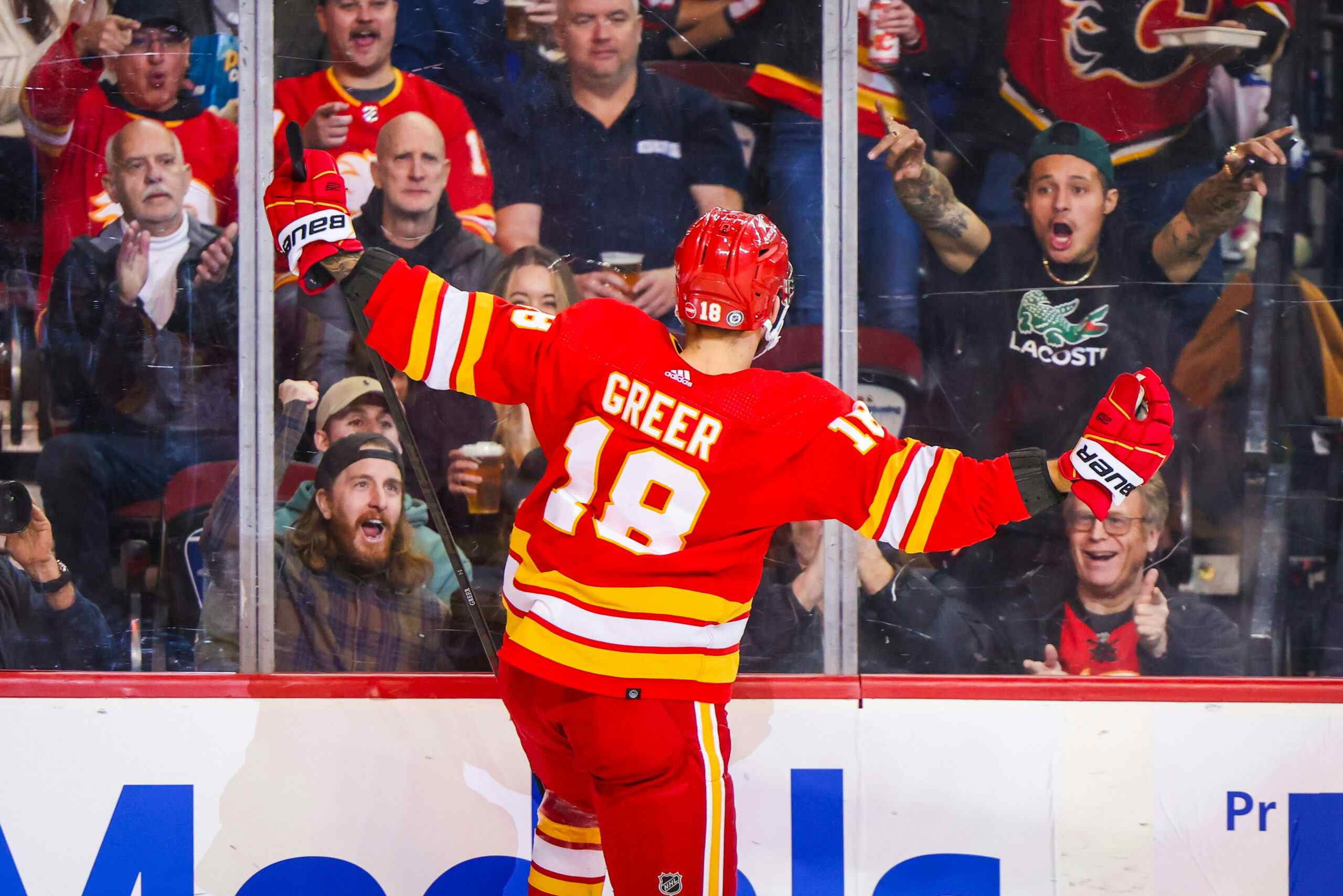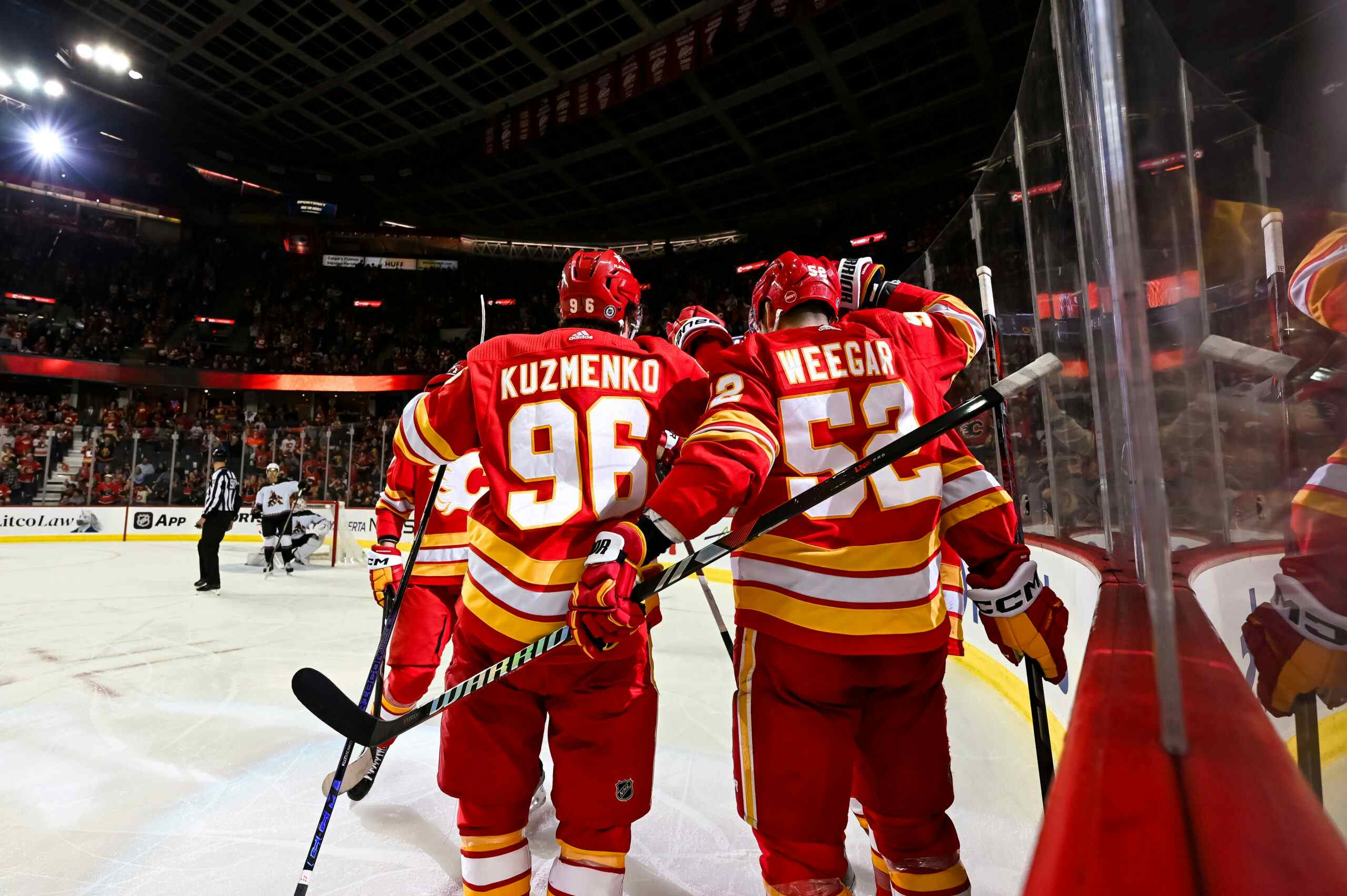FlamesNation player evaluation: Rasmus Andersson

By Craig Petter
3 years agoFor a developing hockey player veering towards the end of his entry-level contract in the NHL, there exist a few possible boosts to his image that he hopes to enjoy. In the case of Rasmus Andersson, these boosts included rising prominence, improved production, and a juicy payday.
Whereas many Calgary Flames skidded down a cliff this past season on an individual level, Andersson weathered the rocks and continued to climb, proving himself a legitimate top-four defenceman. And, concerning his role on the team and renown in the league, he has yet to even sniff a summit.
2019-20 season summary
(Data courtesy of NaturalStatTrick)
| GAMES PLAYED | GOALS | ASSISTS | POINTS | TOI/GP | 5V5 CF% | 5V5 CF% REL | OFZ% | PDO |
| 70 | 5 | 17 | 22 | 19:56 | 51.45 | 1.79 | 49.84 | 0.987 |
Andersson experienced some conservative usage—not unexpected for an NHL sophomore— at the beginning of the season. The cork to which the Flames’ coaches pinned whichever flimsy sixth defenceman they divined should start from the stars early that morning, Andersson logged minutes alongside guys like Oliver Kylington and Michael Stone. But his impressive play swiftly propelled him to a top-four role (accompanied by some flirtation with the second power play unit later in the year). As the Flames’ blueline operated like a revolving door for the rest of the season due to trades and injuries, Andersson experimented with the likes of Mark Giordano and Noah Hanifin on his left as well.
Though his partner never remained steady for too long, Andersson’s effectiveness did. He boasted the second-highest even-strength xGF% among all Flames defenceman with over 40 games on the books, only trailing the grizzled old captain. Tipping the xGF% scales in his favour specifically was a low xGA/60 (2.13), spotlighting his ability to stifle and silence quality scoring chances. Andersson also registered the third-highest even-strength CF% among the same smattering of defencemen, the second-highest even-strength on-ice SV% and the lowest HDCA/60.
An essentially even split between offensive zone starts and those from any other slab of ice combined certainly bolstered his odds of faring well in these regards, but the relieved pressure seemed to let him flourish. Compared with his teammates, Andersson managed to concede the fewest threatening shot attempts (and actual conversions, too) during his shifts while the Flames spawned enough shot attempts in his presence to admirably offset those he did. Simply put, the Swede shushed anyone who thought promoting him to top-four status was a premature move.
Compared with last season
The leap from 22-year-old NHL rookie to 23-year-old NHL sophomore seems like a small step, but for Rasmus Andersson, it closer resembled a sudden shoot from puppy to bloodhound. Everywhere he excelled this past year (namely CF% and xGF%) he struggled during the 2018-19 campaign—for entirely excusable reasons (see above invocations of his youth).
Analytics aside, Andersson’s increased usage sparked improvement (career-highs) in basic contributions, too. Though he played nine fewer games this past season (a deflatingly lame present courtesy of wretched Aunt COVID), Andersson eclipsed his goal—and point, since he stuttered with another 17 assist season—totals as a rookie by three. On pace for a full 82 game season though, projections foretold another goal and four more points to pad his production and finish at six goals and 26 points. If he multiplies his overall output by 37% every year as he did this past season (which is an entirely sustainable rate, irrefutable logic, totally valid math for sure), hey, the Flames will have a 67-point scorer on their blueline by 2023!
In all seriousness, Andersson bumped his ATOI/GP up by nearly four minutes, matched his previous single-season totals in hits and blocks already by the shutdown, and shouldered an emphasized role for the first time in his professional hockey career. Kudos and Godspeed to him.
What about next season?
Thanks to the aforementioned extension inked in January that netted Andersson another six years and an AAV of $4.55 million, a trusted presence on the blueline next year is a given. He will positively feast on minutes, expand his role (especially in the defensive zone) and, of course, continue to chirp after whistles and beam the occasional laser from the point high-blocker. The glinting new contract guarantees his status as a Flame; hurtling upwards along his current trajectory would guarantee his success as one too.
Forking over a reasonable sum to a blossoming 23-year-old defenseman was perhaps the cleanest deal Brad Treliving made all year. The talent is there, the promise palpable. Expect Rasmus Andersson to build on his offensive numbers, mimic this past year’s consistency, refine his defensive zone play and wow those few nincompoops still unacquainted with his skill. Far from a gamble, Andersson should easily justify his extension with his play next season. The only lingering question is: how quickly will that AAV seem a bargain?
2020 Player Evaluations
Recent articles from Craig Petter





